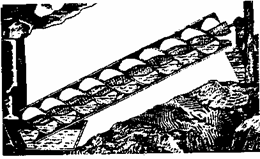home
 Economy Economy
 Books Books
 History of the world economy - Polyak GB History of the world economy - Polyak GB
|
History of the world economy - Polyak GB
7.4. Economic development in the Hellenistic era (late IV-I centuries BC)
The power of Alexander the Great after his death broke up into a number of states: the Greco-Macedonian kingdom ;
Egypt, in which the Ptolemaic dynasty ruled; The Seleucid state;
The central core of which was Syria and Mesopotamia; Pergamon and Pontus kingdoms in Asia Minor, etc. In these, Hellenistic, states there is a synthesis of Greek (Hellenic) and Oriental elements; This applies to the economic, and socio-political, and cultural spheres.
On the development of the economy in the era of Hellenism, a favorable effect was rendered by the transformation of the eastern part of the Mediterranean Sea into the inner sea of the Greek world. In addition, in most Hellenistic states, the monetary system was maintained, the unification of which began even under Alexander the Great: the weight standard adopted in Athens was taken as a basis, along with silver, gold coins were minted.
A very important role in economic development was played by the exchange of experience between the Greeks and the Eastern peoples, contributing to the improvement of agricultural practices, the cultivation of new crops, and the development of technology and further specialization in the craft. All this had a huge impact on the growth of marketability and the increase in trade turnover.
In this period, considerable development was given to science and technology: the famous scientist Archimedes discovered the hydraulic law, the law of the lever, invented the bolt, the screw dredger and much more.

Archimedov screw, which allows to pump water from the bottom up
In the era of Hellenism, the center of economic life moved from the mainland Greece and the Aegean Sea to the south and east, where many new cities are based on the coasts of the seas and on the caravan routes. Major trading and artisan centers were Alexandria in the Nile Delta in Egypt, Pergamon in the northwest of Asia Minor, Antioch on the Orontes River in Syria, Selsvkia on the Tigris River in Mesopotamia, and others. In the III-II cc. BC. E. Hellenistic policies survived the heyday.

Alexandrovsky lighthouse
Cities were administrative units, in most cases they retained self-government bodies, to which were attributed land owned by the city and individuals. The rest of the land fund was considered to be state property: there were actually royal lands, as well as lands granted to the approximate tsar, to temples transferred to keep soldiers.
In Hellenistic states, classical slavery gradually spread, but along with it, there was a debt servitude characteristic of the eastern economy . In agriculture, the number of slaves increased, but mostly the land was cultivated by members of rural communities, which are more or less dependent on the state. In the craft along with private workshops existed, whose employees also depended on the state.
Questions for repetition
1. Name and compare the stages of development of the ancient Greek economy.
2. Describe the features of the economy of ancient Greece.
3. Tell us about the reforms of Lycurgus and Solon and their impact on the economic development of Sparta and Athens.
4. Explain why the crisis of the policy in the IV. BC. E.


Comments
When commenting on, remember that the content and tone of your message can hurt the feelings of real people, show respect and tolerance to your interlocutors even if you do not share their opinion, your behavior in the conditions of freedom of expression and anonymity provided by the Internet, changes Not only virtual, but also the real world. All comments are hidden from the index, spam is controlled.